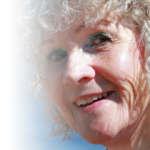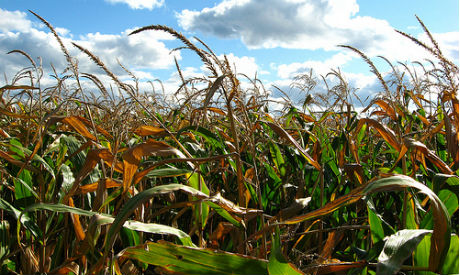 Two scenes in the movie Ben-Hur poignantly weave together the relationship of our body with our soul. Judah Ben-Hur, in one scene, is on a forced march through a desert, chained with other captives, and denied water. A bystander ignores a centurion’s threats, and offers Ben-Hur water. Later in the story, Ben-Hur approaches Jesus carrying the Cross upon which He is to be nailed. When He collapses en route, Ben-Hur ignores hostile soldiers, to offer Him water. Looking into the face of Jesus, Ben-Hur recognizes the same man who, similarly challenging authority, had given water to Ben-Hur.
Two scenes in the movie Ben-Hur poignantly weave together the relationship of our body with our soul. Judah Ben-Hur, in one scene, is on a forced march through a desert, chained with other captives, and denied water. A bystander ignores a centurion’s threats, and offers Ben-Hur water. Later in the story, Ben-Hur approaches Jesus carrying the Cross upon which He is to be nailed. When He collapses en route, Ben-Hur ignores hostile soldiers, to offer Him water. Looking into the face of Jesus, Ben-Hur recognizes the same man who, similarly challenging authority, had given water to Ben-Hur.
Loving kindness, indeed, to nurture the soul is as important as water is to nurture the body, for our continued survival in a world worth living in.
To authentically express our love inclusively, we need to be more proactive to protect accessibility of water for the human family, as a human right, as well as sustenance for all planetary life. We also are called to restore the health of polluted water, for our very survival.
In doing so, we therefore are called to challenge any authorities and power holders, whether government or corporate, who are reducing water to be a commodity for profits to benefit the few at life-threatening costs to the many as well as the planetary life support system.
We need to restore the sacred feminine, the Source of Life, by recognizing how our energies are inextricably intertwined at so many amazing levels, many of which remain invisible and, therefore, mysterious to us.
See the below photograph of a water crystal, for example, formed after the words “Love and Gratitude” on paper were taped around a bottle of water. This image appears in Dr. Masaru Emoto’s book The Hidden Messages in Water (2005).
As long as I can remember, I have felt a deep concern for justice, and questioned any situations in which I experienced lack of kindness. Whenever I witnessed loving kindness, therefore, it deeply affected me. Perhaps that is why Ben-Hur (1959) had such a profound impact on me as a child, seeing it on a special family outing to the cinema.
Ben-Hur was an epic historic drama of the day, particularly for a North American society predominantly Judaic-Christian. This movie showcased a new widescreen format, and used a new six-track stereo sound. The story was enhanced by the longest movie score ever composed, the composer Miklos Rozsa. The film was the first to win 11 Academy Awards.
Since then, I have lost track of how many times I have watched this epic version of Ben-Hur on TV, still transported by the beauty of the music. Its eloquence carries the story’s timeless spiritual message.
The film story threads its way from the visible world of what is familiar and mundane which, when torn asunder, carries the main character into the depths of the dark night of the soul. For the story’s protagonist Ben-Hur, the task next becomes the inner quest to transcend emotional pain and hate, as difficult as it is, in order to break away from those inner chains, and transcend them to enter the most hallowed ground of our being, our Higher Self.
From that soulful place within each of us – waiting to be awakened or re-discovered – resides our innate capacity for love, accompanied by the possibility to forgive, as well as the humility to be grateful for life itself.
The symbolism of Christ’s Resurrection, as well, is to remind us, in this season of rebirth and renewal, the importance to reconnect with our capacities for love, forgiveness, and gratitude. From those inner locations we continue to cherish what and whom we love. Every generation on this Earth has experienced challenges in doing so, and we have ours.
Today we are confronting environmental uncertainty of huge proportions, as well as growing economic hardships during an extended period of transition, affecting humanity at many levels.
However, I would like to frame the above challenge by suggesting that, foremost, we need to understand consciousness more deeply and expansively, both our own and also its different energetic expressions in other life forms, and discover the ways in which we are interconnected.
What is so exciting about this historic moment, and the great adventure of life, is to open our mind, body, heart and soul, to the incredible wealth of knowledge that can help us to transform the conflicts that can seem overwhelming on our planetary home.
This pursuit invites us to rediscover ancient wisdom that remains significantly relevant, a fact understood by cutting edge researchers, in medicine, science and other fields. They recognize, as independent thinkers, the ways that perennial wisdom is interwoven with newer approaches, such as quantum physics, to understanding our world and what lies beyond, and the importance to apply these insights into our everyday world.
Such fields of knowledge, regrettably, tend to be marginalized, trivialized, even totally disregarded, by established institutions and systems of thinking that want to control what we think, and retain the status quo for economic benefit limited to the few.
We have tremendous power within our consciousness to re-create a different reality, if we take the time, and have the humility to make the open-minded effort to support, and learn from, these maverick thinkers and practitioners who can empower us to engage in radical – yet life-affirming – changes in how we currently live on this planet.
`Consciousness,’ in fact, is one of those multifaceted fields which holds tremendous potential to help us evolve more closely to our human potential. Fortified by a vision to explore yet unknown inner and outer territory, and despite struggles to get funded, independent-thinking scientific and medical researchers persevere to discover how humans can tap more effectively into our innate healing capacity. They are discovering formerly under-recognized capacities within other species and also within the planet’s elements.
The ground-breaking work of Dr. Masaru Emoto illustrates a brilliant example of courageous, experimental investigations in regard to the consciousness of water. His extensive studies evoke the qualities of maverick researchers throughout history who, simply, apply both their right brain and their left brain to resolve problems.
Emoto’s studies, for example, have been based on inquisitiveness guided by intuition, imagination, and spiritual qualities such as compassion, love and gratitude, rather than be restricted within the purely analytic approach of empirical science that focuses only on what can be seen and measured.
Of course, it is expected that Dr. Emoto’s work has been ridiculed by certain scientists who operate within the limitations of left-brain empirical science. For such critics and other skeptics to label his work as “pseudo-science” only reveals what I have outlined in several earlier blog posts, namely, the “fractured consciousness” of mainstream Western culture.
After looking at various YouTube presentations of Dr. Masaru Emoto’s work, what I recommend is a four-part series, each 10 minutes or less, which give a clear picture of his process in demonstrating how water crystals are photographed. We see school children and their teachers witnessing the evidence. Titled “Dr. Masaru Emoto” begin to watch at: http://www.youtube.com/watch?v=aqWzEd2fI_Y.
Humility is one further spiritual quality that is implicit in Dr. Emoto’s process, in which he enables the water to speak for itself, in a certain sense, telling its story through the diverse formations of crystals that illuminate experiences from loving care to pollution.
In the spirit of this blog post’s focus on kindness and gratitude, I will quote Dr. Emoto from The Hidden Messages in Water:
“…love and gratitude combine to give the crystals a unique depth and refinement, a diamond-like brilliance…Love tends to be a more active energy, the act of giving oneself unconditionally. By contrast, gratitude is a more passive energy, a feeling that results from having been given something – knowing that you have been given the gift of life and reaching out to receive it joyously with both hands” [2005, Emoto, pp. 78,79].
Does not this description by Dr. Emoto speak to an essential truth? We actively can open the door for the light of joy to enter each day, in acknowledging how all elements and species of the earth nurture our own life, and render our very existence possible.


